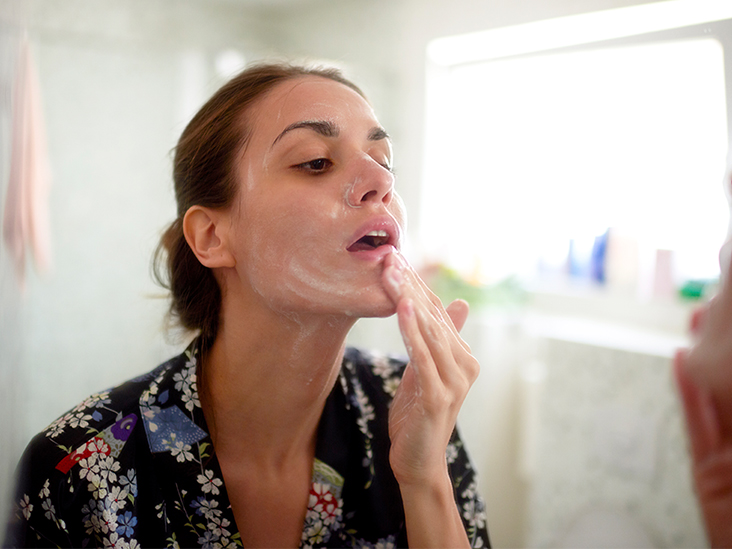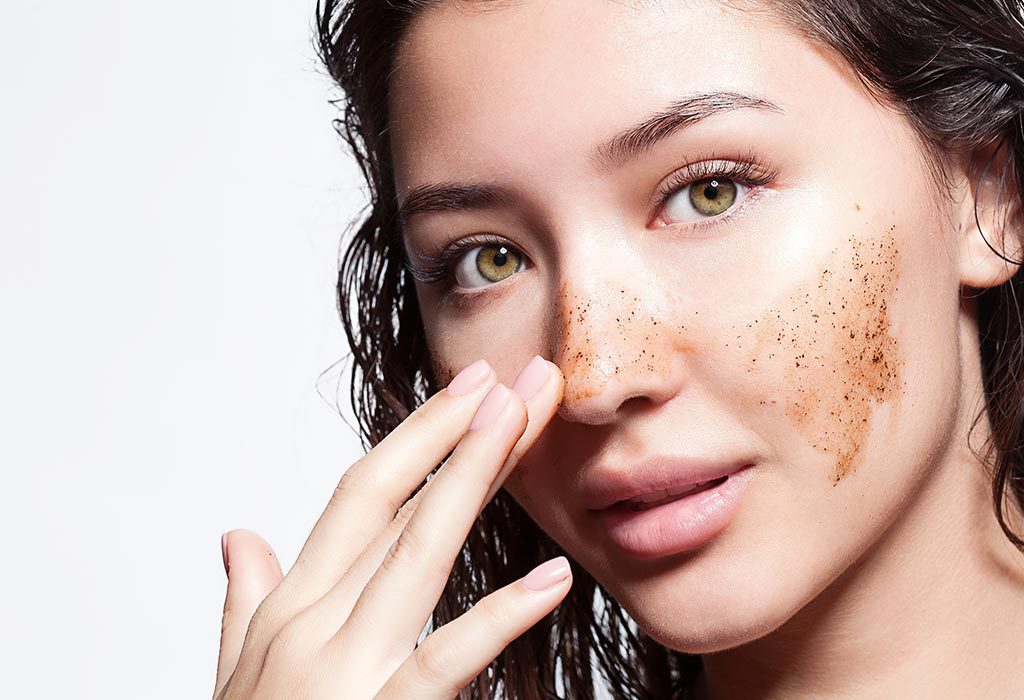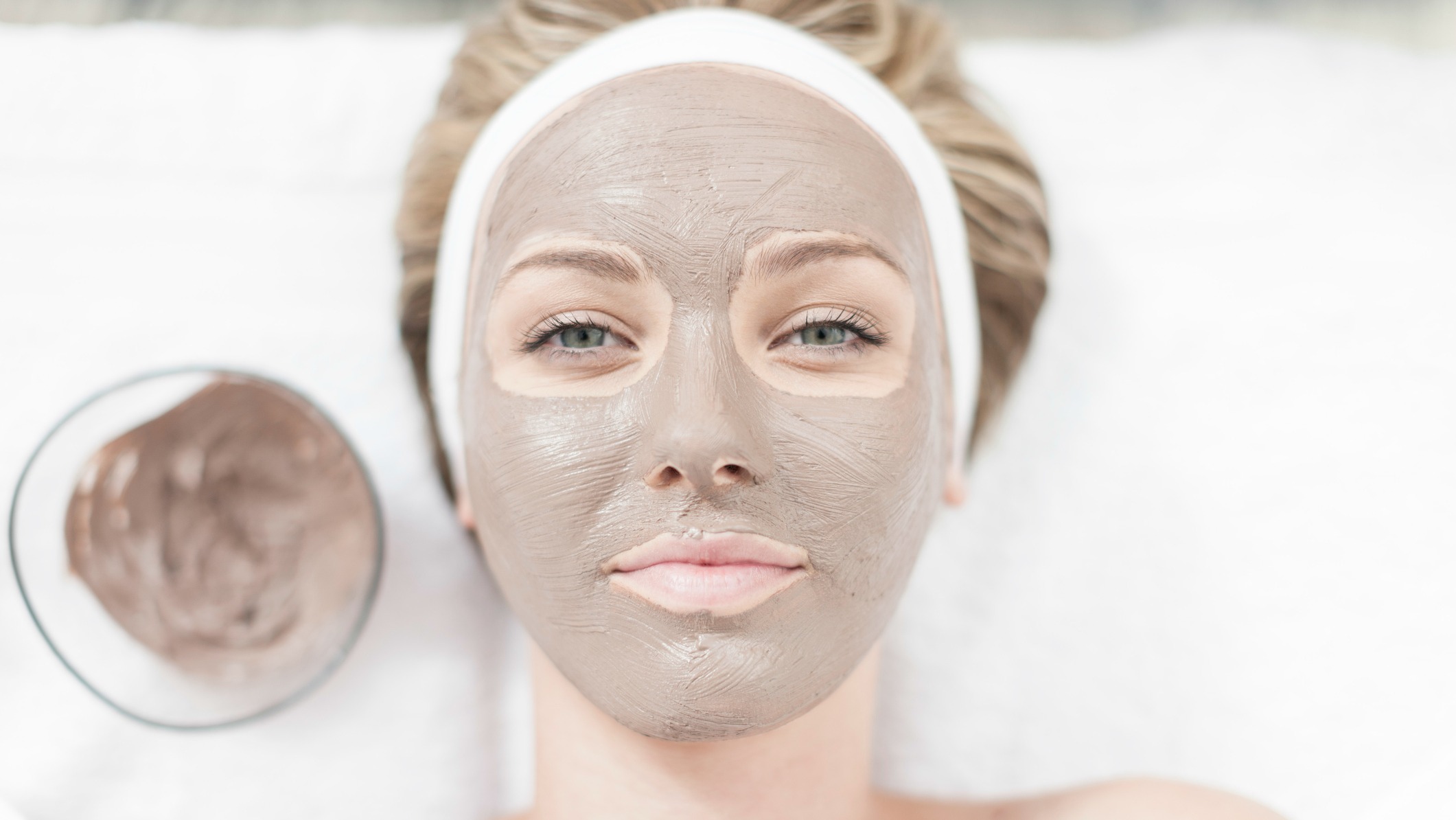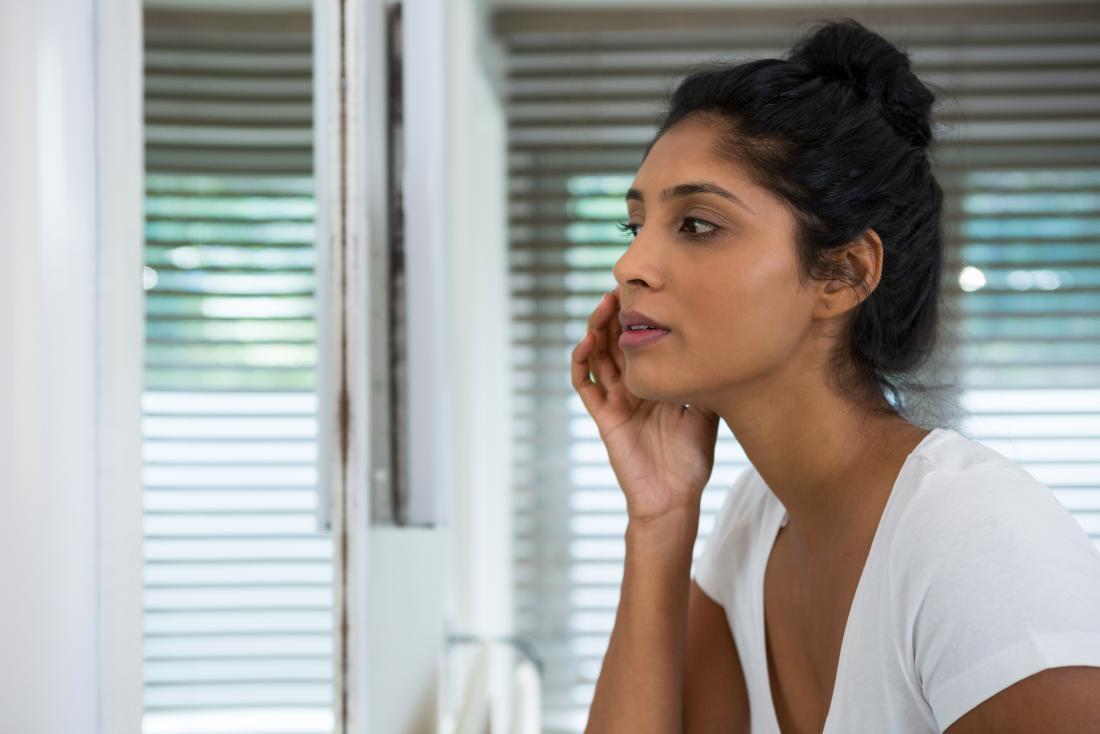How to Remove Blackheads from Nose: 5 Natural Masks and Scrubs
Highlights
The good news is that blackheads can be removed at home. That too naturally, using ingredients lying right next to you in your kitchen shelf. Here's how to remove blackheads from nose using natural ingredients.
How to Remove Blackheads from Nose
1. Lemon Honey Mask
Is there anything your humble lemon cannot pull off? We doubt! An easy and effective way to get rid of the nasty blackheads is by applying simple lemon-honey mask. Lemon's astringent properties open the clogged pores, while honey with its antibacterial properties keeps the bacterial action that causes blackheads at bay.
How to apply: Take one teaspoon of lemon juice and add half a teaspoon of honey to it and mix it well. Apply this mixture on to your nose. Let it rest for about 15 minutes. Once it dries, wash it off with lukewarm water. Repeat 3-4 times in a week for best results.
Lemon's astringent properties open the clogged pores.
2. Baking soda and lemon mask
Baking soda is a natural exfoliator that helps to get rid of the dead skin cells, which ultimately results in black heads. Whereas, lemon helps open the clogged pores and tightens them, leaving a very little scope for blackheads to find their way.
Baking soda is a natural exfoliator that helps to get rid of the dead skin cells.
How to apply: Take one tablespoon of baking soda and mix it with a half tablespoon of lemon juice. Apply this paste on your nose. Once it dries, rinse it off with lukewarm water.
3. Egg white mask
Egg whites are not just healthy for our diet, but also for our skin. With its sticky texture, it easily sits on your nose and clears those stubborn blackheads by shrinking the pores and tightens the skin to keep the blackhead formation at bay.
How to apply: Whisk the egg whites and add about two teaspoons of lemon juice. Apply this egg white mask on to the affected area. Let this layer dry. Apply the second layer, and keep it for 15-20 minutes. Rinse the mask off with tap water. Make sure you wash it well so that the smell does not stay.
Egg whites are not just healthy for our diet, but also for our skin.
4. Oatmeal scrub
You thought oats were just good for your morning breakfast? Turns out that it can do wonders for your skin too! The scrub will not only help to declog the pores, but also exfoliates the skin to give you a natural glow.
How to apply: Take two tablespoons of oatmeal, three tablespoons of plain yogurt and a half lemon juice. Mix it well until you get a fine paste. Apply this on to your nose and the most affected area. Let it sit for 10-15 minutes. Rinse it off with warm water.
The scrub will not only help to declog the pores, but also exfoliates the skin.
5. Sugar scrub
To get rid of those nasty blackheads, you can make yourself an effective sugar scrub that can be made with just two ingredients - sugar and jojoba oil. This scrub helps to cut down the dead skin cell production and prevents blackheads.
How to apply: Take three tablespoons of jojoba oil and mix it with one cup of white sugar. Stir it well until you get an evenly thick mixture. You can also use olive oil or almond oil instead of jojoba oil. Apply the scrub on to your skin and massage it. Rinse off the scrub with lukewarm water. For best results, you can scrub at least twice a week.
To get rid of those nasty blackheads, you can make yourself an effective sugar scrub.
We are sure with the use these natural scrubs and masks, you can get rid of those blackheads naturally, without spending too much!
About Sushmita SenguptaSharing a strong penchant for food, Sushmita loves all things good, cheesy and greasy. Her other favourite pastime activities other than discussing food includes, reading, watching movies and binge-watching TV shows.
5 helpful tips to actually get rid of blackheads
Pore strips used to be a fad favourite, but it may not be the best way to unclog them
It seems simple, but is it really that easy to get rid of stubborn blackheads? Pore strips used to be a fad favourite, but it may not be the best way to get rid of them.
First, it helps to understand what blackheads are. Blackheads are a clump of oil and dirt mixed together inside a pore. If we don’t take care of our pores, the dirt and oil will eventually accumulate and skin can become rough, scratchy and bumpy.
As compiled by SELF, here are some helpful tips to get rid of blackheads.
Wash your face at least twice a day

PHOTO: FILE
This seems like basic advice, but cleansing can go a long way to help prevent dirt and oil from accumulating in your pores. Washing your face is one of the three most important steps in your skin-care routine for good reason. Regularly cleansing your skin will help remove any excess dirt, oil, dead skin cells, bacteria, or makeup that’s lingering on your face.
Exfoliate regularly

PHOTO: FILE
If cleansing isn’t enough to remove all the dirt clogging your pores, exfoliation is a must. For most people just exfoliating once or twice a week is plenty. Some can increase that to three times per week without any issues, while others can only exfoliate once a week or every other week before experiencing irritation and dryness. The most important thing is to (carefully) experiment and see what types of exfoliating products and frequencies work for you and your skin.
5 fat-burning vitamins and minerals to help boost weight loss
Use a clay or charcoal mask occasionally

Masks containing clay or charcoal can help get rid of excess dirt and oil from the skin. Products like these may not “detox” your skin, but over time they can help get rid of blackheads and manage other acne issues. You can use the products as directed, such as wearing it for 10-15 minutes and then rinsing it off, or you can use them as spot treatments overnight.
Wear oil-free sunscreen everyday

Wearing a daily sunscreen is undoubtedly the most important part of your daily skin-care routine because it can help prevent skin cancer and premature signs of aging. Plus, UV rays can dry your skin out, which makes acne worse.
Ice your skin if you extract blackheads

Despite dermatologists warning against it, sometimes extracting your own blackheads happens. And when it does, it’s important to care for the skin afterwards to reduce inflammation and help prevent more acne. Icing the area for a few minutes to help reduce redness and inflammation is important. Make sure to put the ice inside a paper towel or washcloth.
Have something to add to the story? Share it in the comments below.
How to Treat Acne in 5 Min, Overnight, or Holistically for Life
There are few things as unwelcome as the arrival of a blemish-to-be. We’ve all experienced acne more than once, yet that doesn’t mean we’re ever less surprised when a zit decides to take up residence again.
Breathe — it’s okay.
As the most common skin condition in the United States, you and everyone you know has likely all dealt with a zit (or 20) before. This stat doesn’t mean Love Your Acne — it’s more of a reminder that anyone who makes you feel bad about having it is wrong.
Your pimples don’t have personality — you do, and your personality is what makes your face lovely to look at!
Still, we get it, you’re going to want to pop. So before you do so, read our round up of the cleanest — in order of the quickest — ways you can treat blackheads, whiteheads, and cysts.
And whatever method you end up trying, remember that these fixes aren’t meant to be treating your whole face, but for the one to two surprise pimples. For chronic acne, jump to learning about long-term strategies so you can minimize the blemishes after they’ve cleared up.
1. Pimple cover up: under 1 minute
There’s no blemish that a dab of cover up can’t hide.
Use green concealer to hide any potential redness, or salmon/orange concealer to counteract the blues hues on darker skin. For lighter or smaller acne, just skin-colored concealer might do for a smooth cover up.
When applying, remember this: use proper lighting, make sure you have a small brush for tiny cover ups, and keep a blending sponge for a completely silky finish.
Skin tip: In order to find your perfect makeup match — and to protect against possible skin allergies — always test out the product on your skin before use. If you don’t wear makeup enough to justify a pot, consider looking for sample packs or braving a day without cover up. You might realize how little other people notice.
2. Ice on pimple: 1 minute or more
The use of ice can go a long way. This cooling method works best for inflammatory acne that flares under the skin — including cysts, nodules, pustules, and papules.
Directions:
If your pimple is particularly inflamed, you can follow it up with repeat sessions, but wait 5 minutes in between each application. Continue to ice your pimple until it’s gone down enough to cover up.
Do this daily if the pimple persists.
3. Acne patches: 20-min minimum
Can small adhesive dots really suck the life out of your pimple? Yes — although how long it takes depends on the type of acne, as well as if it has a head, or has an opening to release sebum.
From spots that reduce pimple size in just 6 hours to waterproof patches that will act on blemishes overnight, you’re sure to find a patch to suit your skin care needs.
Directions:
It’s important to note that just like any acne treatment, patches may not provide the same results for everyone.
Dermatologist Suzan Obagi, doctor and director of the UPMC Cosmetic Surgery & Skin Health Center, notes that finding your perfect acne-fighting regimen often requires trial and error with products.
4. Draining a pimple: 5-15 minutes
Derms and estheticians like Dr. Obagi warn that serious complications can arise during at-home experimentation of lancing or popping a pimple.
In the case of particularly large or painful cysts, she recommends seeing a doctor, noting that the use of “unsterile instruments can be a setup for disaster.”
However, we know that even one pimple can wreak havoc on our esteem, so if you don’t mind (or prefer) potential scarring, follow these instructions carefully.
Directions:
This method will allow for any acne substance lingering in your pores to come out, which will prevent you from using your fingers or an unsterile instrument for popping.
5. Mask treatment: 15-20 min
Give your pimple a little TLC with an easy-to-follow mask treatment. Before you layer on the mask, clean your skin, exfoliate, and then add the mask.
For a mask treatment, you want to pick a product that has ingredients like charcoal, Aztec clay, and Sulfur clay, known for clearing up acne.
6. Cortisone shots: 4 to 8 hours
In the case of severe and painful acne, you may want to schedule a visit with your doctor for a cortisone shot. The $25+ shot (depending on your insurance) is injected directly into the skin and helps to quickly fight redness and speed up the healing process.
7. Spot treatment: overnight, at least
Spot treatment is a targeted method that can take a little time and is best followed up with an acne patch. You may want to ice the pimple before spot treating, especially for bigger zits.
After washing your face, ice the pimple for less than 5 minutes. Follow that up with the application of an over-the-counter pimple product of your choice.
Be sure to apply a spot treatment that contains ingredients noted for their acne-fighting abilities, including:
Once applied, you want to keep your fingers away and wait for the pimple to disappear.
Got some time to calm your flare-up? Focus on slowly introducing the quick fixes in combo order, like lancing, spot treatment, and an acne patch. Or masking, icing, and a spot treatment again.
The idea is to drain your pimple while also babysitting your skin so scarring and dryness don’t occur.
To give your skin an extra boost, follow this 3-day method to rebuild its inner and outer defenses:
Although the process may take some time, Obagi notes that many parts of our daily lives can be potential acne triggers, including our hairstyling items.
“Avoid letting hair products clog your pores,” she says. “If you are acne prone, keep your hair pulled off your face or avoid these hair products. When you condition in the shower, follow this by washing your back, chest, and face with soap to remove any conditioner that gets onto your skin.”
She also suggests keeping your hands away from your face, and monitoring your diet for signs that food — particularly items with dairy or gluten — are causing you to break out.
Try as we might to rid ourselves of unwanted acne, chronic or recurring acne may need to be treated more aggressively from the inside-out.
At-home blue LED light (1 to 4 weeks)
Research regarding the effectiveness of LED light treatments for acne remains inconclusive, but that hasn’t stopped some people from taking advantage. This treatment requires eight 10- or 20-minute treatments over a month.
Retinoid (2 to 4 weeks)
Along with fighting acne, retinoids are great for reducing scarring and smoothing the skin. You should begin to notice a change in your skin after applying the product every other day for two to four weeks.
Zinc (3 months)
Known for its ability to fight off inflammation, zinc may potentially provide you relief from chronic acne. There are side effects and risks to taking a zinc supplement, but those concerned should always consult with a doctor first.
See a dermatologist
When all else fails, you can always schedule an appointment with a trusted dermatologist. These skin care experts are here to help you, and may have other means of treatment not available over-the-counter, including:
Not every acne treatment is worth trying, even some of the ones listed above may not suit your skin type. Masking can irritate sensitive skin and skin that’s slow to heal will want to stay away from lancing.
But be extra wary of DIY routines, especially those that encourage you to use undiluted or raw ingredients like:
Some may swear by these remedies for fighting their acne, but research hasn’t confirmed those claims, and they may cause more harm and sensitivity than healing.
Instead Obagi suggests beginning with a trip to your favorite drugstore. “You can start with over-the-counter acne medications from the drugstores to see if you can control your acne at home. This should include a retinol or retinaldehyde cream to help reduce acne formation and an acne wash or acne wipe (preferably with salicylic acid and witch hazel or tea tree oil).”
How effective these treatments are is going to vary from person to skin type to even weather — it really will take some experimentation! Still, you can begin taking lifestyle steps to positively impact your skin.
As Obagi reveals, one of the best things you can do to treat your acne is to practice enhancing your overall well-being.
And this looks different for everyone — for some it means revisiting your diet and eliminating sugar, or sleeping early to ensure your body’s defenses are strong again. For others, it means embracing your acne and throwing all care out the window.





No comments:
Post a Comment